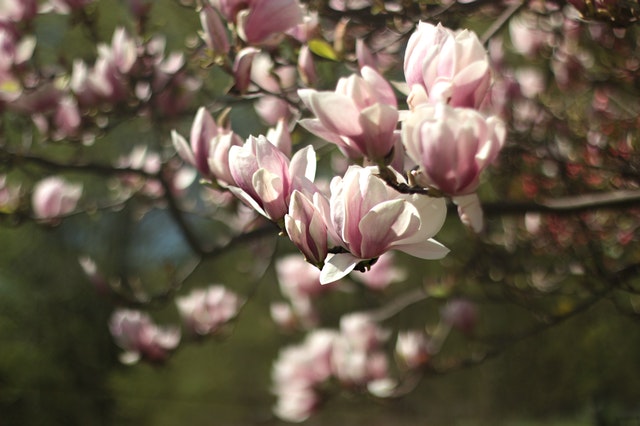The Magnolia
This article is an excerpt from the book called “ENCYCLOPEDIA OF NORTH AMERICAN TREES” by “SAM BENVIE”. This article talks about the magnolia’s of northern california. We hope this information is useful for the our readers.
Of the about 80 species of magnolia found in tropical and temperate regions of the world, seven are native to North America. A subspecies of big leaf magnolia is sometimes recognized as a distinct species, Ashe’s magnolia. Other species are distributed in east and Southeast Asia, the West Indies, and Central and South America. The native species of magnolia are found in the east, especially the southeast. In general, these species are found scattered throughout forested habitats or in small groves; all prefer moist, rich soils. Some will tolerate occasional seasonal flooding. They are all fairly shade-tolerant as young saplings, but most species require full sun at maturity. The native magnolias are moderately fast-growing, and range from fairly short-lived to moderately long-lived, depending on the species.
Ranging from small trees, the native magnolias generally have short trunks and well-developed broad crowns. Leaves are evergreen in a few species, but are otherwise deciduous. They are alternately arranged on the twig, and are simple, oval to elliptical in shape, with smooth edges and short leaf-stalks. Some species have hairy under sides o the leaves. The flowers of magnolias are large and very showy, sometimes fragrant, and borne at the ends of branches in the spring. The fruit that follows the flowers is a spiraling set of fleshy follicles, in some species richly colored pink or red, that split open in the autumn to release one or two red-coated seeds.
The native magnolias, as well as numerous introduced species and innumerable hybrids, are highly prized as ornamental landscape trees. Their flowers are large and visually highly attractively. Those that are scented are especially esteemed. They are not tolerant of drought, and are prone to some fairly troublesome insect pests. They also require some protection from winds, especially the evergreen species, but are otherwise adaptable and very rewarding ornamental trees. With the exception of southern magnolia, the wood of the native magnolias is not commercial of much importance. Wildlife uses, primarily as shelter, are minimal.
Continue reading about Watering and Mulching.

